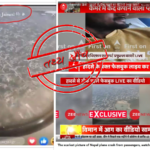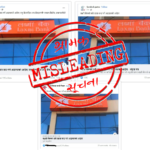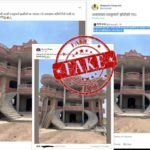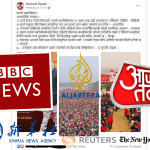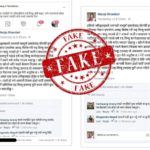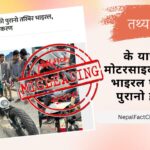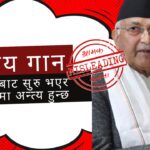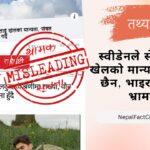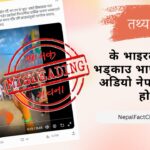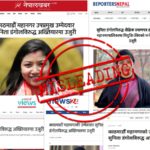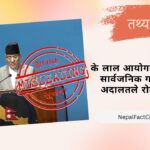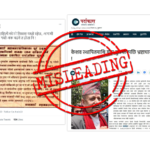हाम्रो तथ्यजाँच विधि
नेपाल: तथ्यजाँचले तथ्यजाँच गर्दा अपनाउने विधि र प्रक्रिया:
सामग्रीको प्राप्ति
हाम्रो तथ्यजाँचकीहरूले दैनिक पत्रपत्रिका र सामाजिक सञ्जालमा आएका प्रमुख सामग्रीहरू अनुगमन गर्छन्।
हामीलाई विभिन्न माध्यमहरू – जस्तै इमेल, सामाजिक सञ्जाल, भाइबर ग्रुप र वेबसाइटमा रहेको फाराम – बाट पाठकहरूले तथ्यजाँच अनुरोध पठाउँछन्।
तथ्यजाँच गर्ने कि नगर्ने निर्णय
तथ्यजाँच गर्ने कि नगर्ने भन्ने निर्णय तथ्यजाँचकी वा सम्पादकले निम्न मापदण्डका आधारमा गर्छन्:
- के यो सूचना तथ्यजाँच गर्नु आवश्यक छ? (सम्पादकीय निर्णय)
- के उपलब्ध तथ्यको आधारमा तथ्यजाँच गर्न सकिन्छ? (प्राविधिक निर्णय)
- के तथ्यजाँच गर्ने तथ्यजाँचकी र समय छ? (प्रशासनिक निर्णय)
सामान्यतया स्वविवेक प्रयोग गर्दा ती भाइरल छन्/छैनन्, ती जानकारी वा समाचारले नागरिकको अधिकार वा प्रजातन्त्र वा अन्य नकारात्मक असर गर्छ/गर्दैन र ती सामग्रीको तथ्यजाँच गर्न सकिने अवस्था छ/छैन भन्ने आधारमा गर्छन्।
हामीसँग सीमित तथ्यजाँचकी र स्रोतसाधन छ। त्यसैले तथ्यजाँचकीले स्वविवेकले गर्न सक्ने जति छानेर तथ्यजाँच गर्छन्।
तथ्यजाँच गर्दा कुनै एक पक्षको मात्रै नहोस् भन्ने उदेश्यले हाम्रो स्वतन्त्र ओभरसाइट समूहले त्रैमासिक रूपमा मूल्याङ्कन गर्छ।
तथ्यजाँचको प्रक्रिया
तथ्यजाँच गर्ने निर्णय गरिएका सामग्रीहरू तथ्यजाँच गर्दा गरिने प्रक्रिया यस प्रकार छ:
- सामग्रीको प्राथमिक स्रोतको खोजी
- सामग्री आधारिक रहेको प्रमाणको खोजी (अडिओ, भिडिओ, दस्ताबेज, तथ्याङ्क र कागजात)
- प्रमाणको आधिकारिताको खोजी (अडिओ, भिडिओ, दस्ताबेज, तथ्याङ्क र कागजात सही र आधिकारिक स्रोतका हो कि होइनन् वा तिनलाई तोडमरोड गरिएका छ या छैनन् भन्ने खोजी)
- त्यस विषयका थप अनुसन्धान (सम्बन्धित व्यक्ति, विज्ञ वा विषयका प्रकाशनहरू)
तथ्यजाँचका लागि सामान्यरूपमा यीमध्ये सबै वा धेरै उपायहरू अवलम्बन गरिन्छ: इन्टरनेटमा खोजी, विज्ञहरूसँग सरसल्लाह, सम्बन्धित व्यक्ति वा निकाय वा संस्था वा समूहसँग जानकारी, प्रमाण (अडियो, भिडिओ वा दस्ताबेज, अध्ययन/अनुसन्धान वा तथ्याङ्क) को खोजी, आधिकारिक स्रोतको खोजी।
इन्टरनेटमा खोजी गर्नका लागि विभिन्न उपकरण र सफ्टवेयरहरू प्रयोग गरिन्छ।
तथ्यजाँच पुन: परीक्षण
एउटा तथ्यजाँचकीले तथ्यजाँच गरेको कुरा अर्को तथ्यजाँचकी वा सम्पादकले पुन: परीक्षण गर्छौँ। र सो तथ्यजाँच प्रकाशन गर्ने कि नगर्ने भन्ने निर्णय गर्छौँ।
सामान्यतया सही ठहरिएका तथ्यजाँच प्रकाशन हुँदैनन् तर सही सामग्रीका बारेमा आमनागरिकमा भ्रम छ वा सो विषयमा विवाद उत्पन्न भएका छन् भने सही सूचना ठहरिएका तथ्यजाँचहरू पनि प्रकाशन गरिन्छ।
धेरैजसो अवस्थामा तथ्यजाँचमा सही देखिएका सामग्रीका तथ्यका बारेमा सार्वजनिक वादविवाद छैन भने ती प्रकाशन गरिरहनु आवश्यक हुँदैनन्।
तथ्यजाँच लेखन
तथ्यजाँचकीले प्रक्रिया पुर्याएर गरेको तथ्यजाँच उपलब्ध सबै प्रमाणको लिङ्क सहित निष्कर्ष राखेर लेख्छन्। तथ्यजाँचका आधारमा सूचनालाई हामी चार प्रकारले वर्गीकरण गर्छौँ। हाम्रो वर्गीकरण र त्यसका अर्थ यहाँ छ।
तथ्यजाँच प्रकाशन
सम्पादकले तथ्यजाँच प्रकाशन गर्छन्।
सच्याउने प्रतिबद्धता
प्रकाशित सामग्री सकेसम्म सही र तथ्यसहितको बनाउने हाम्रो प्रतिबद्धता छ।
तर कथंकदाचित भूल भएमा हामी तुरुन्तै पारदर्शी रूपमा भूलसुधार गर्न तत्पर छौँ।
अहिलेसम्म हामीले तथ्यजाँच गरेका सामग्रीहरूमा हाम्रो निष्कर्ष परिवर्तन गर्ने गरी भूल गरेका छैनौँ र त्यस्तो नगर्न हामी प्रतिबद्ध छौँ।
हामी पूर्ण भूलसुधार नीति यहाँ छ।
Our fact-checking procedure
The fact-checking procedure of NepalFactCheck.org:
Receiving information for fact-checks
Our fact-checkers monitor the content on mainstream media and social media daily.
We also receive fact-check requests from our audience through email, social media, Viber group, and the form on the website.
Selection of material
Fact-checkers or editor selects material for fact-checks based on the following criteria:
- Is it necessary to fact-check the information? (editorial consideration)
- Can it be fact-checked based on available facts? (technical consideration)
- Is there a fact-checker and resources to fact-check? (administrative consideration)
Normally the selection is a subjective analysis of whether the information is viral or how likely the information impact people’s right or democracy or have a negative impact on the general public or society.
We have a limited number of fact-checkers and limited resources therefore the fact-checkers do their best to fact-check as much as possible.
To ensure that fact-checking is not unduly concentrated on any one side, our independent Oversight Board reviews fact-checks every three months.
The fact-checking process
Once selected, the fact-checkers normally follow the following process to fact-check:
- Finding the primary source of information
- Finding content on which the information is based (audio, video, document, data, or report)
- Establishing the authenticity of proofs (whether audio, video, document, fact, or report are correct and unmodified)
- Additional research (expert, concerned people, and publications)
Normally, all or some of the following tools are used: internet search, advanced search, reverse image search, meta-analysis, information from experts, information from concerned person or institution or group, and library search.
We use various internet tools and software to fact-check.
Verification of fact-check
The editor (or another fact-checker) verifies the fact-check and decides on whether to publish or not to publish that fact-checks.
We usually don’t publish fact-checks of information that are found to be factual unless it’s contested in social media or elsewhere.
If the information is found to be correct, and there is no debate around it, we decide not to publish the fact-check.
Writing the fact-check
Fact-checker writes the fact-checks with all the proofs (with a link whenever possible) and conclusion on categorization. Our four categories and their meaning are here.
Publication of fact-check
Only the editor publishes the fact-check.
Correction Policy
We are committed to publishing correct and factual information as far as possible.
We are ready to public correction in a transparent manner as soon as we are aware of any mistake.
So far, we haven’t corrected any out publication leading to change in the categorization and we are committed to remaining so.
Read our complete correction policy here.

